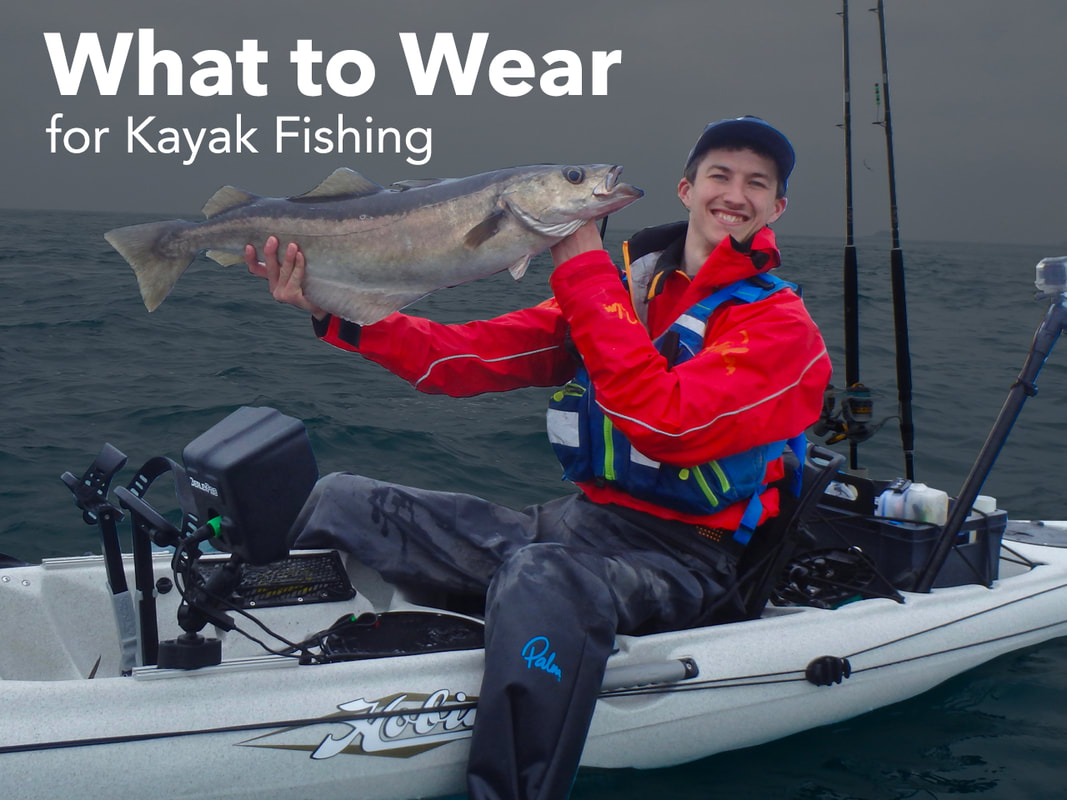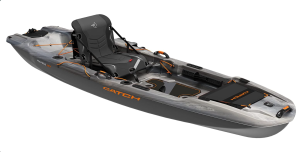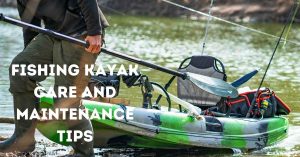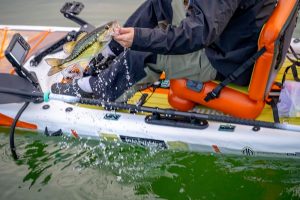Wear thermal base layers, waterproof outerwear, and a personal flotation device for kayak fishing in winter. Neoprene gloves and boots are also essential.
what to wear kayak fishing in winter?
Kayak fishing in winter demands proper attire to stay warm and safe. Start with thermal base layers to retain body heat. A waterproof outer layer will protect you from splashes and cold winds. Don’t forget a personal flotation device, as safety should always be a priority.
Neoprene gloves and boots are crucial to keep your hands and feet warm and dry. Dressing in layers allows you to adjust to changing temperatures, ensuring comfort throughout your trip. By wearing the right gear, you can enjoy a successful and enjoyable kayak fishing experience even in the coldest months.
Layering Basics
Winter kayak fishing requires the right clothing. Proper layering keeps you warm and dry. Here are the basics of layering for winter kayak fishing.
Base Layer
Your base layer man is crucial. It sits next to your skin. Choose moisture-wicking fabrics. Avoid cotton; it absorbs water.
- Synthetic materials like polyester
- Merino wool
These materials keep you dry. They also provide warmth. A base layer keeps sweat away from your skin.
Mid Layer
The mid layer jacket provides insulation. It traps body heat. Choose materials like:
- Fleece
- Down
- Synthetic insulations
A good mid layer adds warmth. It should also allow some breathability. This prevents overheating.
Outer Layer
The outer layer protects against wind and water. Choose waterproof and windproof jackets. Look for these features:
- Sealed seams
- Adjustable cuffs and hems
- Hood for added protection
Ensure the outer layer is breathable. This prevents sweat buildup. A good outer layer keeps you dry and shields you from the elements.
Choosing The Right Wetsuit
Winter kayak fishing requires the right gear. A well-chosen wetsuit keeps you warm and safe. Let’s explore the key aspects of choosing the right wetsuit.
Material Options
Wetsuits come in different materials. The most common material is neoprene. Neoprene is flexible and provides excellent insulation. Some wetsuits use a mix of neoprene and spandex. This combination offers better stretch and comfort.
Another option is thermoplastic elastomer (TPE). TPE is eco-friendly and hypoallergenic. It’s a good choice for those with sensitive skin.
Thickness Guide
Wetsuit thickness is crucial for warmth. Wetsuits usually range from 2mm to 7mm thick. Thicker wetsuits provide more insulation but can be less flexible.
| Water Temperature | Wetsuit Thickness |
|---|---|
| Above 60°F | 2mm – 3mm |
| 50°F to 60°F | 4mm – 5mm |
| Below 50°F | 6mm – 7mm |
Choose a wetsuit based on the water temperature you expect. For colder waters, go for a thicker wetsuit. For milder conditions, a thinner wetsuit will do.
- 2mm – 3mm: Suitable for warmer waters.
- 4mm – 5mm: Ideal for moderate cold.
- 6mm – 7mm: Best for very cold waters.
Remember, the right wetsuit material and thickness can make your winter kayak fishing enjoyable and safe.
Dry Suits Vs. Wetsuits
Winter kayak fishing can be thrilling but requires proper gear. Choosing between a dry suit and a wetsuit is crucial. Both have unique benefits and drawbacks. Let’s dive into the details to help you decide.
Pros And Cons
| Dry Suits | Wetsuits |
|---|---|
|
|
|
|
When To Use Each
Choosing between a dry suit and a wetsuit depends on conditions.
- Dry Suits:
- Best for extremely cold water
- Ideal for longer trips
- Suitable when staying dry is crucial
- Wetsuits:
- Good for mild winter conditions
- Shorter fishing trips
- When budget is a concern
Both options have their place in winter kayak fishing. Assess your needs and conditions before choosing.

Credit: www.kayakfishing.blog
Footwear Essentials
Staying warm and dry while kayak fishing in winter is crucial. Your feet are especially vulnerable to cold and wet conditions. Choosing the right footwear can make or break your winter fishing experience. Here are the essential items you need for your feet:
Waterproof Boots
Waterproof boots are a must-have for winter kayak fishing. They keep your feet dry in icy water. Wet feet can quickly lead to discomfort and even frostbite. Look for boots made from durable materials like neoprene or rubber. These materials provide excellent water resistance.
A good pair of waterproof boots also offers non-slip soles. This feature helps you maintain your balance on slippery surfaces. Choose boots that are easy to put on and take off. Boots with adjustable straps or laces offer a snug fit.
| Feature | Importance |
|---|---|
| Waterproof Material | Keeps feet dry |
| Non-slip Soles | Prevents slips |
| Adjustable Fit | Ensures comfort |
Insulated Socks
Insulated socks add an extra layer of warmth. They are designed to trap heat and keep your feet warm. Wool and synthetic blends are excellent choices for insulation. These materials wick moisture away from your skin.
Choose socks that are thick but not too bulky. Bulky socks can make your boots fit poorly. Opt for socks with reinforced heels and toes. This adds durability and comfort, making them last longer.
- Wool or Synthetic Blends: Best for insulation
- Moisture-Wicking: Keeps feet dry
- Reinforced Areas: Adds durability
Hand Protection
Kayak fishing in winter can be tough on your hands. Cold, wet conditions make it essential to protect your hands. Proper hand protection keeps you warm and ensures you can handle your gear effectively.
Gloves
Gloves are essential for keeping your hands warm. Choose gloves made from waterproof and windproof materials. Neoprene gloves are a popular choice for winter kayak fishing. They provide excellent insulation and flexibility. Look for gloves with textured palms. This helps you grip your paddle and fishing rod securely.
Consider gloves with touch screen compatibility. This feature allows you to use your phone without removing your gloves. Some gloves come with removable liners. This offers extra warmth and versatility. Here’s a quick comparison of different glove types:
| Glove Type | Material | Key Features |
|---|---|---|
| Neoprene | Neoprene | Waterproof, flexible, insulated |
| Fleece-lined | Fleece | Warm, soft, breathable |
| Touchscreen | Various | Touchscreen compatibility, varied insulation |
Pogies
Pogies are another great option for hand protection. They attach directly to your paddle. This allows you to slide your hands inside for warmth. Pogies are typically made from neoprene or other insulating materials. They provide a direct barrier against wind and water.
Using pogies lets you maintain a natural grip on your paddle. This can be more comfortable than wearing thick gloves. Pogies are also easy to remove when you need to handle fishing gear. Here’s why you might choose pogies over gloves:
- More natural paddle grip
- Quick removal for gear handling
- Excellent wind and water protection
For maximum warmth, some anglers use both gloves and pogies. This combination ensures double protection against the cold.

Credit: hub.jacksonkayak.com
Head And Neck Warmth
Winter kayak fishing can be thrilling but also very cold. Keeping your head and neck warm is crucial. These areas are vulnerable to the cold. Proper gear can make your outing much more enjoyable.
Hats
A good hat is essential for winter kayak fishing. A wool beanie is a great choice. It traps heat and keeps your head warm. A fleece-lined hat adds extra comfort. Choose a hat that covers your ears. Cold ears can be very painful. Waterproof hats are also a good idea. They keep your head dry in case of splashes.
- Wool Beanie: Traps heat, keeps your head warm.
- Fleece-Lined Hat: Adds extra comfort and warmth.
- Waterproof Hats: Keeps your head dry from splashes.
Neck Gaiters
Neck gaiters are another must-have. They protect your neck from the cold wind. A fleece neck gaiter is very warm. It feels soft against your skin. A buff is also a good option. It can be worn in many ways. You can pull it up over your nose. This gives extra protection against the cold.
- Fleece Neck Gaiter: Very warm and soft.
- Buff: Versatile and multi-functional.
Here is a quick comparison:
| Item | Material | Benefits |
|---|---|---|
| Wool Beanie | Wool | Traps heat, covers ears |
| Fleece-Lined Hat | Fleece | Extra comfort, warmth |
| Waterproof Hat | Waterproof Material | Keeps head dry |
| Fleece Neck Gaiter | Fleece | Warm, soft against skin |
| Buff | Various | Versatile, multi-functional |
Safety Gear
Winter kayak fishing is thrilling but requires proper safety gear. Ensuring safety in cold waters is essential. Below are key items you must have.
Life Jackets
Always wear a life jacket while kayak fishing. Choose a jacket with good insulation. It should keep you warm and afloat. Make sure it fits well and is comfortable.
- Choose a life jacket made for cold weather.
- Check for Coast Guard approval.
- Ensure it has reflective strips for visibility.
- Look for pockets to store small gear.
Emergency Kits
An emergency kit is essential for winter kayak fishing. Pack items to help in various situations.
| Item | Purpose |
|---|---|
| First Aid Kit | For treating minor injuries |
| Whistle | To signal for help |
| Thermal Blanket | To keep warm if wet |
| Waterproof Flashlight | For visibility in low light |
Ensure all items are stored in a dry bag. This keeps them safe from water.
Maintaining Comfort
Kayak fishing in winter can be challenging. Staying comfortable is crucial for an enjoyable experience. Proper clothing and gear can make a big difference.
Moisture Management
Keeping dry is the first step to staying comfortable. Choose clothing made of moisture-wicking materials. These fabrics pull sweat away from your skin. Avoid cotton as it retains moisture and can make you cold.
| Layer | Recommended Fabric |
|---|---|
| Base Layer | Merino Wool, Synthetic |
| Mid Layer | Fleece, Down |
| Outer Layer | Waterproof, Breathable |
Avoid being too warm, as it can cause sweating. Choose layers that are easy to remove.
Preventing Hypothermia
Hypothermia is a real threat in winter. Dress in layers to trap body heat. Start with a snug base layer. Add a warm mid-layer and finish with a waterproof outer layer.
- Wear a hat to retain body heat.
- Use gloves to keep hands warm.
- Insulated boots prevent cold feet.
Be aware of the signs of hypothermia. These include shivering, confusion, and slurred speech. If you notice these signs, get to a warm place immediately.
Stay dry and warm to maintain comfort while kayak fishing in winter.
Frequently Asked Questions
What To Wear Under Drysuit?
Wear moisture-wicking base layers under your drysuit. They keep you warm and dry by wicking sweat away.
How To Keep Feet Warm?
Wear neoprene socks and waterproof boots. They insulate and protect your feet from cold water and wind.
Is Layering Important For Kayak Fishing?
Yes, layering is crucial. It traps heat and allows you to adjust clothing based on temperature changes.
Staying warm and safe while kayak fishing in winter is essential. Choose the right layers and gear for comfort. Remember, dry suits, thermal layers, and proper footwear make a big difference. Prioritize safety and enjoy your winter kayak fishing adventures.
Your preparation ensures a successful and enjoyable experience on the water.










